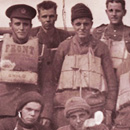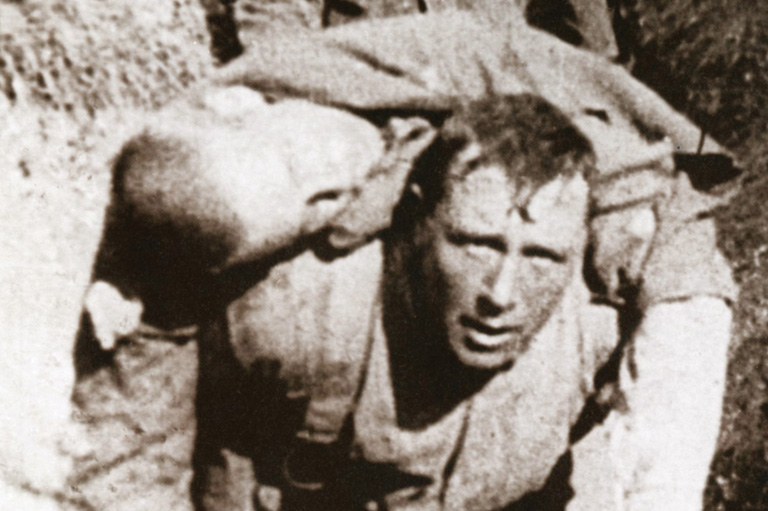The Great War — Battle of Vimy Ridge
The victory at Vimy Ridge remains Canada's most celebrated attack of the war.
On Easter Monday, 1917, the Canadian Corps captured one of the most dominating geographic features on the Western Front. Two Canadians in particular, along with British General Julian Byng, developed the plan to crack the German fortress at Vimy.
The first was General Arthur Currie, a real estate broker from Victoria, British Columbia, who rose from the militia to become Canada's top soldier. The second was McGill scientist Andrew McNaughton, who coordinated the creeping barrage artillery tactic that helped propel the Canadians to victory.
The goal of the creeping barrage was to create a line of suppressing shellfire just in front of the Canadian troops that moved forward as soldiers advanced across the battlefield. The timetable of the attack had to be precise.
While others had tried the tactic before, none had marched forward so close to the line of fire as the Canadians at this battle. It was risky, but if it worked, the Canadians would catch the Germans before they could emerge from their fortified dugouts.
On the morning of April 9th, 1917, along the entire length of the ridge, all four Canadian divisions advanced side by side for the first time in a single attack. With the artillery hammering the Germans, the Canadians advanced quickly despite taking heavy casualties.
As each German defensive line was captured, fresh troops moved forward to continue the attack. The 1st, 2nd, and 3rd Canadian divisions achieved their objectives quickly. A final push by the 4th Canadian Division on April 12th captured the last major position.
But victory came at a cost.
During four days of fighting, Canada suffered more than 10,000 casualties. This was in addition to the 10,000 lost in the four months leading up to the attack. While the battle itself did little to change the course of the war, it cemented the Canadians' reputation as fierce attacking soldiers.
Advertisement
The Great War Video Series
With 7 uniquely curated newsletters to choose from, we have something for everyone.
We hope you’ll help us continue to share fascinating stories about Canada’s past by making a donation to Canada’s History Society today.
We highlight our nation’s diverse past by telling stories that illuminate the people, places, and events that unite us as Canadians, and by making those stories accessible to everyone through our free online content.
We are a registered charity that depends on contributions from readers like you to share inspiring and informative stories with students and citizens of all ages — award-winning stories written by Canada’s top historians, authors, journalists, and history enthusiasts.
Any amount helps, or better yet, start a monthly donation today. Your support makes all the difference. Thank you!
Themes associated with this article
Advertisement

The war that changed Canada forever is reflected here in words and pictures.
You might also like...

Canada’s History Archive, featuring The Beaver, is now available for your browsing and searching pleasure!









